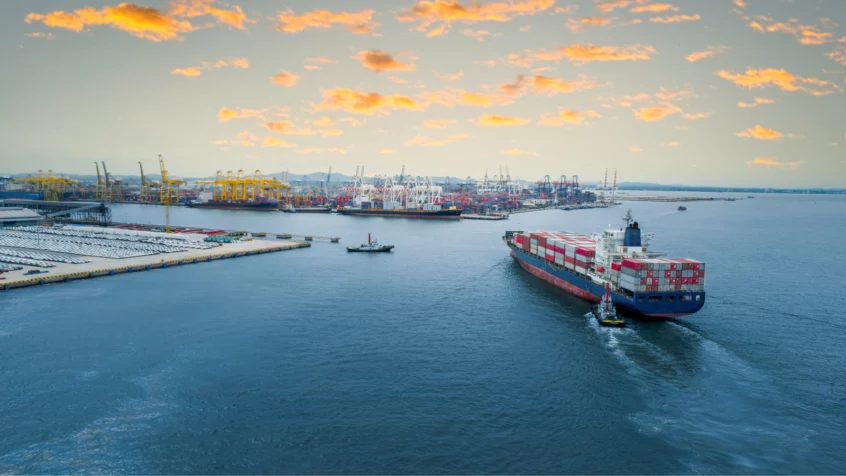The transportation of dangerous goods is a critical aspect of supply chains that demands meticulous planning and adherence to strict safety standards. Mishandling hazardous chemicals can pose significant risks to people, the environment, and property. To ensure safe and secure transportation, companies must be well-informed about the various classes of dangerous goods and comply with specific requirements.
Understanding Dangerous Goods Classes:
Before embarking on the transportation of dangerous goods, it is essential to have a clear understanding of the various hazardous goods classes:
- Explosives, such as fireworks or ammunition.
- Gases, including flammable gases (such as LPG and aerosols), non-flammable gases (such as helium or nitrogen), and toxic gases (such as nitric acid or ammonia).
- Flammable liquids, such as petrol or acetone.
- Flammable solids and substances, including spontaneously combustible substances such as carbon or calcium dithionite, and goods that are dangerous when wet, like calcium carbide.
- Oxidizing substances and organic peroxides, such as swimming pool chlorine or benzoyl peroxide.
- Toxic and infectious substances, such as cyanides or pesticides.
- Corrosive substances, such as hydrochloric acid.
- Others, including dry ice, and elevated temperature liquids like bitumen.
- Mixed class goods, which have more than one class.
Five Requirements for Transporting Dangerous Goods:
- Segregate the Goods Correctly: Preventing incompatible classes of dangerous goods from coming into contact with each other is of utmost importance. Specialized Transport Segregation Devices can be used to separate dangerous goods in transit, ensuring safety during transportation.
- Be Aware of Storage Temperatures: Certain hazardous goods, like peroxides, require specific temperature control to prevent unwanted reactions. Understanding the temperature requirements for your materials is vital, and maintaining the appropriate conditions during transportation is essential.
- Know Your Flash Points: To avoid explosions and fires, flammable goods must be stored below their flash points—the lowest temperature at which their vapors ignite. Ensuring that all team members are aware of the flash points of dangerous goods is critical for safe transportation.
- Have the Correct Transport Documentation: Regulators can request transport documentation at any time during transportation. Companies must have all necessary transport documents on hand, providing required information on the goods being carried in the vehicle, such as the name and phone number of the consignor and a detailed description of the dangerous goods.
- Label Goods Correctly: Proper labeling of hazardous chemicals is mandatory, following the Globally Harmonized System (GHS) requirements outlined by the UN. Primary and secondary containers used in transportation must meet GHS label requirements.
The Importance of Careful Offloading:
Safety protocols must be closely followed during the offloading of dangerous goods. Clearing obstacles and minimizing traffic in the area is crucial, and using safety products, such as concrete stair treads when carrying dangerous goods up or down stairs, adds an additional layer of protection.
Selecting a Reliable Transportation Partner:
Choosing the right transportation partner is paramount when dealing with hazardous goods. Before making a decision, ensure that:
- Vehicles are equipped with required safety accessories, such as fire extinguishers and warning signs.
- Drivers receive sufficient training to handle hazardous materials safely.
- Documentation is well-protected and easily accessible during transit.
Essential Pointers for a Seamless Transit Experience
Start Early and Secure a Hazmat Trucking Partner: Shipping hazmat cargo involves extra time and effort to complete and process the required paperwork. Additionally, finding a reliable hazmat trucking partner can be challenging. While steamship lines might accept your cargo for overseas shipping, getting it to and from the port remains a critical task. However, in the current tight capacity freight market, hazmat specialists may prioritize other, less complicated shipments, potentially causing delays in transporting your hazmat cargo. Therefore, starting the planning process early and securing a hazmat trucking partner well in advance is vital to meeting your shipping deadline.
Sweat the Details: Thorough Preparation is Key Hazardous cargo is subject to stringent inspections, making attention to detail crucial. Take your time to prepare the shipment and the accompanying documents carefully. Collaborating with a reliable freight forwarding partner can be beneficial during this phase, as they can help you go through a comprehensive checklist to ensure that your shipment is inspection-ready. Neglecting any detail could lead to delays or even the rejection of your cargo. A recent example highlighted how even seemingly minor issues with labeling on inner and outer packaging led to a costly rework and delayed final delivery. By sweating the details during preparation, you can avoid such setbacks and ensure a smoother transit.
Invest in All Risk Cargo Insurance: Shipping hazardous materials involves inherent risks, and accidents during transit can lead to significant liabilities. To protect your business from potential financial losses, it is wise to invest in all risk cargo insurance specifically tailored for hazmat shipments. General cargo policies often exclude coverage for hazardous materials, and relying solely on your company’s blanket coverage may not be sufficient to address the unique risks associated with hazmat cargo. Consult with your freight forwarder to explore suitable insurance options that offer comprehensive coverage for your hazmat shipments.
Transporting dangerous goods comes with a significant responsibility that requires expertise, adherence to regulations, and meticulous attention to detail. Companies must prioritize safety at every step of the supply chain to protect people, the environment, and property. Partnering with a reputable and knowledgeable transportation company, ensures hazardous freight is handled with the utmost care and in compliance with the strictest safety standards.

